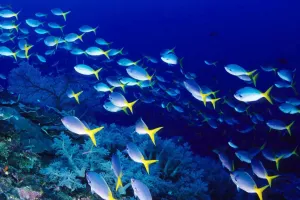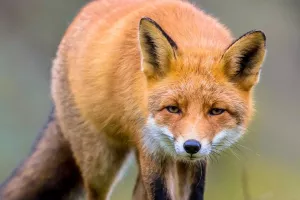The red panda, the genus of the carnivorous Panda family, has 2 subspecies differentiation.. It looks like a cat, but is bigger than a cat. The whole body is reddish brown, the neck and abdomen are dark brown, the cheeks have white markings, and the limbs and soles of the feet are black.
The tail is thick, long and fluffy, with 9 red and dark rings, and the tip of the tail is dark brown. Mainly distributed in China, India and Bhutan.
The red panda has a fat body and is covered with thick long hair. The body length is 40~63 cm, the tail length is more than half of the body length, and the weight is generally about 5 kg. The head is short and broad, the muzzle is prominent, the face is round, and there are white spots on the cheeks. The eyes face forward, with round pupils. The nose is bare, the ears are large and erect, extending forward. The auricle is pointed, with a long tuft of hairs growing on the outside of the base of the ear.
Red pandas usually live in large tree holes or stone caves and crevices in rocks. They come out in the morning and evening to hunt for food, and sleep mostly in caves or in the shade of big trees during the day. When sleeping, the head is curled up in the limbs, the forelimbs hug the head, and the tail covers the body. Sometimes the feet drooped high on the branches. It is good at climbing, and can often climb to high and thin branches to rest or avoid enemies. Because it has thick down on the soles of its feet, it is also suitable for walking on wet moss fields under forests or on rocks. When walking, the forefoot is bent inward, and the gait is staggering, similar to that of a bear.
No matter what the circumstances are, they all look peaceful and content. In general, carnivores are mainly carnivorous, but red pandas are mainly herbivorous. Red pandas surviving in the wild generally feed on bamboo shoots, wild fruits and leaves, and occasionally prey on bird eggs and insects. In the case of captivity, the study found that as long as there are apples in the pile of food, red pandas tend to eat apples first.
Red pandas also have some "little cleanliness". After each meal, it rubs its face with its fore paws or licks the edges of its mouth clean with its tongue. If it wants to defecate, it must be away from the nest.
The most interesting is the red panda's defense mechanism. When it is threatened or frightened, if the opponent is not large, it will stand up, raise its "hands" and push the opponent outward, accompanied by screaming. Although the posture is very cute, it is indeed a manifestation of resistance.
If the opponent does not leave or is very aggressive, the red panda will use its housekeeping skills - climb the tree at the fastest speed to avoid the enemy.


